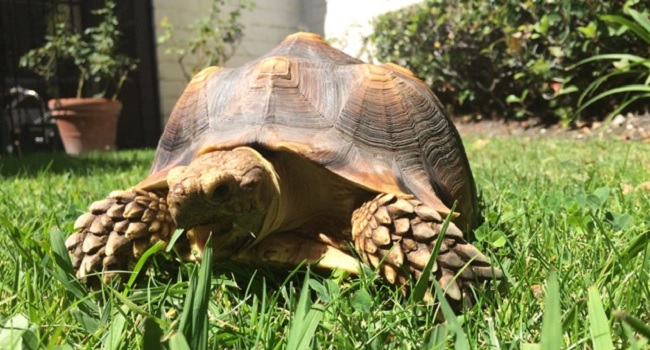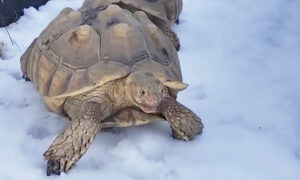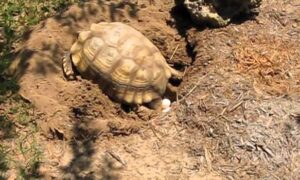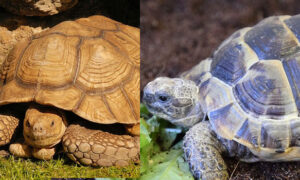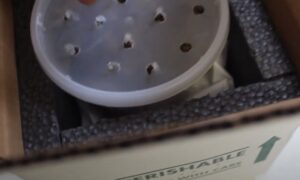Sulcata tortoises are popular pet tortoises. They’re tiny babies that offer the alure of a large dinosaur-like pet. However, sulcatas are not for everyone. They don’t necessarily make the best beginner pet tortoise, but if you feel like a sulcata tortoise is the pet tortoise for you, make sure to prepare for a large pet tortoise before you bring one home.
Research Sulcata Tortoises
It’s important to do all the proper research before bringing a tortoise into your life. It’s important to understand the diet, housing, behaviors and overall health and characteristics so that you can prepare.
Set up a Sulcata Habitat
Depending on whether you’re bringing home a baby sulcata or an adult sulcata, the housing requirements will vary. However, even if you are bringing home a small sulcata tortoise, it’s still very important to prepare for where the tortoise will live when it is too large for an indoor habitat.
Inside Enclosure for Sulcata Tortoise
- Size and Space: For baby and small sulcata tortoises, you’ll want an indoor enclosure that is at least 36″ Wide x 18″ Deep x 19″ Tall.
- Heating and Lighting: Install a heat source to maintain the appropriate temperature range for your tortoise. UVB lighting is essential for their shell and overall health.
- Substrate: Peat moss, coco coir and cypress mulch are popular substrates for sulcata enclosures.
Outside Enclosure for Sulcata Tortoise
- Size and Space: Large tortoises require a lot of outdoor space. Ideally, one adult sulcata should have at least 100 square feet within the enclosure. This provides plenty of walking space, hiding and basking area.
- Fencing: Ensure the enclosure has secure fencing that is at least 24-inches above the ground and about 12-18 inches below the ground.
- Shelter: Provide a sheltered area where the tortoise can retreat from extreme weather conditions, including excessive heat or cold.
- Plants and Hiding Spots: Incorporate safe, edible plants and rocks in the enclosure to create hiding places and enrichment.
Craft the Ideal Diet
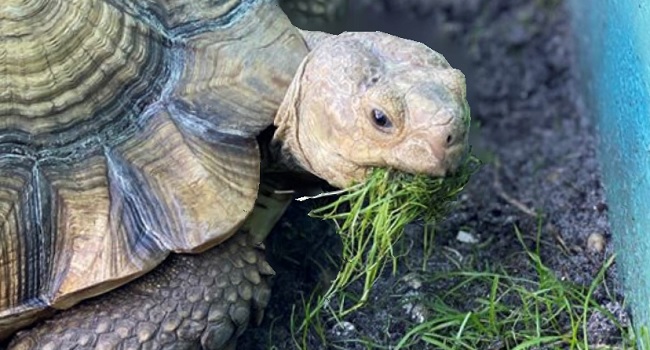
Proper nutrition is crucial for the health and longevity of a pet sulcata tortoise.
- Hay and Grasses: The bulk of a sulcata tortoise’s diet should consist of high-fiber grasses and hays.
- Leafy Greens: Include a variety of dark, leafy greens such as kale, collard greens, and dandelion greens. These provide essential vitamins and minerals.
- Calcium Supplements: Dust the tortoise’s food with a calcium supplement to ensure proper shell development.
- Limit Protein: Sulcata tortoises require a low protein diet.
- Fresh Water: Ensure a constant supply of fresh water, while avoiding waterlogged conditions in the enclosure.
Be Mindful of Common Health Concerns
Regular veterinary check-ups are essential to monitor the health of a sulcata tortoise. Additionally, there are several proactive measures you can take to ensure their well-being:
- Parasite Control: Regular fecal examinations can help detect and treat internal parasites. Follow your veterinarian’s recommendations for deworming.
- Shell Care: Inspect the tortoise’s shell regularly for any signs of damage or abnormalities. Provide a shallow water dish for soaking to help maintain proper shell hydration.
- Regular Weighing: Keep track of your tortoise’s weight to monitor for any sudden changes, which could indicate health issues.
- Beak and Nail Maintenance: Some tortoises may require periodic beak and nail trims. Consult with your veterinarian on the appropriate maintenance routine.
- Environmental Monitoring: Regularly check and maintain the temperature and humidity levels in the enclosure. Tortoises are sensitive to environmental changes, and fluctuations can impact their health.
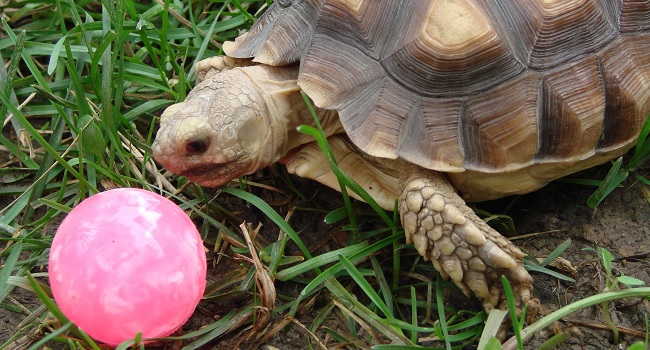
Enrichment
Sulcatas get bored and they can get destructive when they are bored. It’s important to provide enrichment in both an indoor and an outdoor enclosure.
- Obstacle Courses: Create simple obstacle courses using rocks, logs, or other safe materials to encourage movement and exploration.
- Foraging: Hide food items around the enclosure to stimulate natural foraging behaviors.
- Social Interaction: While tortoises may not be as social as some other pets, they can still benefit from positive interactions with their owners. Spend time near the enclosure, talking to and observing the tortoise.
- Toys and Objects: Introduce safe toys and objects for your tortoise to interact with. Avoid anything with small, ingestible parts.

